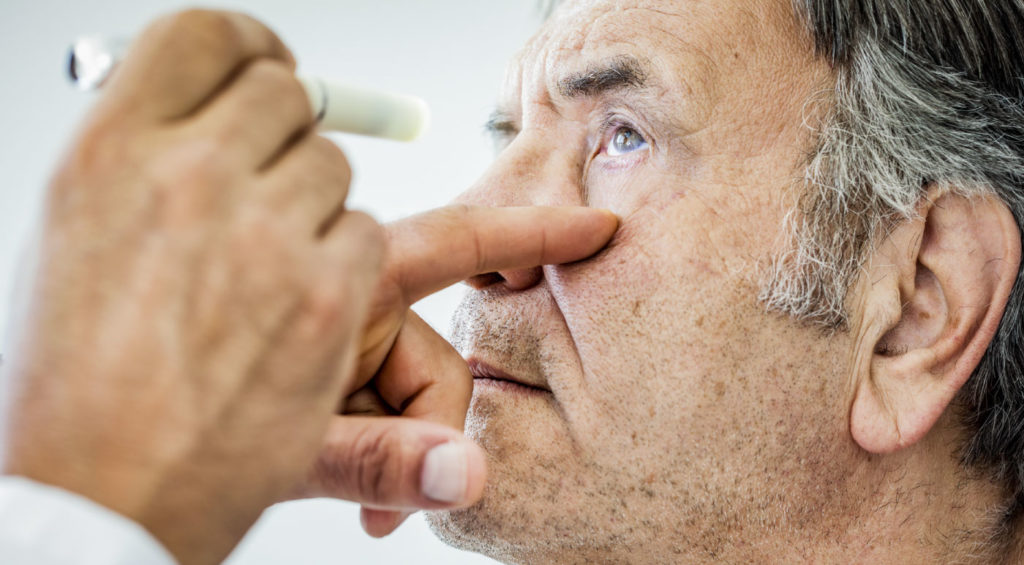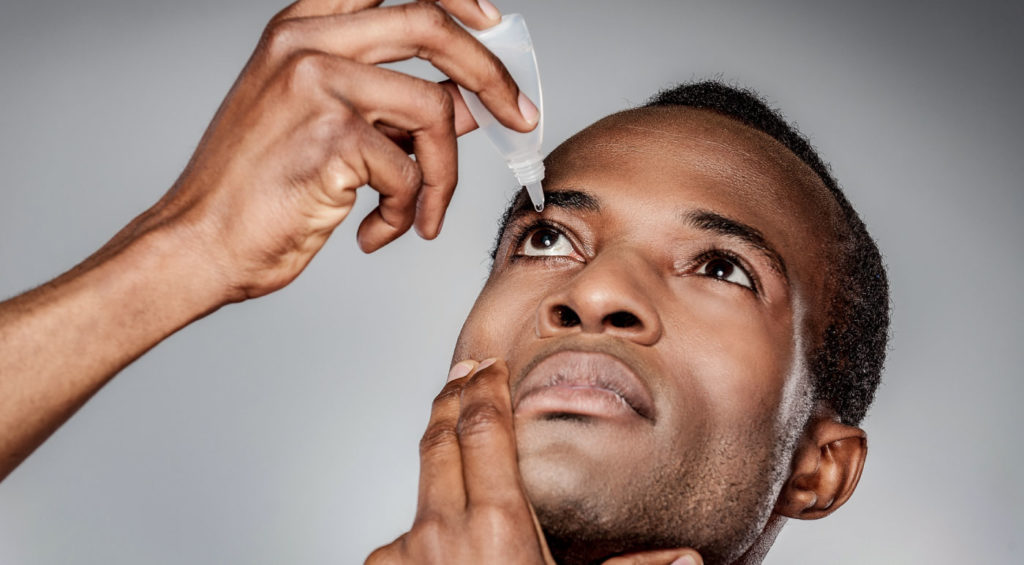
Glaucoma is the second leading cause of blindness in the world, second only to cataracts. It is termed “the silent thief of sight,” as often there are no symptoms of the condition until it is too late. But is CBD for Glaucoma the answer we’ve been searching for?
After several research studies on how it might be used to cure the ailment, the federal government approved the use of medical marijuana for glaucoma. These studies showed that marijuana decreased intraocular pressure as well as conventional drugs for three to four hours. The only downside for some people is the psychoactive effects of marijuana due to its tetrahydrocannabinol (THC) content.
CBD, one of the other cannabinoids of marijuana and typically extracted from its sister industrial hemp plant to make CBD products, is being studied for its use in several health conditions including pain, anxiety, and seizures.
The question is, can CBD (without any THC), be used to actually treat glaucoma?
Table of Contents
- CBD for Glaucoma: Just the Facts
- Understanding Glaucoma
- Conventional Approach to Glaucoma
- CBD for Glaucoma
- What the Research Says on CBD for Glaucoma
- Final Thoughts
CBD for Glaucoma: Just the Facts
Glaucoma is one of the leading causes of blindness and often has no symptoms until it’s too late. Conventional treatments are effective in reducing intraocular pressure, the cause of blindness in glaucoma, but may cause side effects for individuals. Medical marijuana has been approved for glaucoma; however, some find the side effects intolerable and are curious about CBD. Currently, research does not support CBD for glaucoma, but that doesn’t mean more research isn’t warranted.
Understanding Glaucoma

Glaucoma is a condition that affects the eyes. It is when the pressure inside the eye–known as intraocular pressure–increases. This increased pressure causes damage to the optic nerve, which is the main nerve of the eye that is responsible for vision.
The outcome of having glaucoma is severe. If the pressure continues to increase, it can lead to irreversible changes in vision and permanent blindness.
The reason pressure builds up in the eye is from improper drainage of the fluid in your eye, called aqueous humor.
There are two categories of glaucoma: Open-Angle, which is the most common, and Closed-Angle, which is less common.
In open-angle glaucoma, the area where the fluid is supposed to drain appears normal, but for some reason, it does not drain well.
In closed-angle glaucoma, drainage of aqueous humor suddenly becomes impaired, causing a sudden increase in eye pressure. This is a medical emergency.
What Causes Glaucoma?
We do not fully understand the cause of why some people develop glaucoma. However, it seems to run in families and is more common in people with diabetes. WebMD recommends regular eye exams every 1-2 years for people over 40 who have a family history of glaucoma, or people with diabetes. Other risk factors of glaucoma include:
- Farsightedness
- Eye trauma
- African American, Irish, Russian, Japanese, Hispanic, Inuit, or Scandinavian descent
- Steroid medications
Symptoms of Glaucoma
One of the main issues with detecting open-angle glaucoma is that for most people, there are no tell-tale symptoms. It is extremely common to have a slow increase in intraocular pressure without noticing pain or any other warning signs. An eye doctor is trained in how to measure the pressure in your eye, which is why regular check-ups are essential.
One of the first signs people notice is loss of peripheral vision (vision from the sides of your eyes). At this point, the person is usually late into their glaucoma.
In closed-angle glaucoma, which is rare, people may experience pain in the eye, blurriness with a severe headache, causing nausea and vomiting. If this occurs, a person should immediately seek medical attention.
Conventional Approach to Glaucoma
Unfortunately, it is not possible to reverse the damage caused by glaucoma. Therefore, continual monitoring of intraocular pressure is critical. Also managing intraocular pressure is possible with certain medications.
Eye Drops
The most common medications for glaucoma are different forms of eye drops which decrease pressure in the eye through various mechanisms. These include:
- Prostaglandin drops
- Beta-blockers
- Alpha-adrenergic agonists
- Carbonic anhydrase inhibitors
Since these medications are put directly into the eyes, only a small amount reaches the bloodstream. However, some people still suffer side effects like:
- Issues breathing
- Slowed or irregular heart rate
- Low or high blood pressure
- Impotence
- Fatigue
- Irritated eyes
- Dry mouth
Oral Medications
In hard to treat cases, a person may also need oral medication. The most common is a carbonic anhydrase inhibitor. This type of medication decreases the production of aqueous humor in the eye. Unfortunately, this drug comes with a host of side effects including frequent urination, tingling in the fingers and toes, depressed mood, digestive issues, and potential kidney stones.
Given the side effect profile of some of these drugs, people with glaucoma are looking for alternative options. Since medical marijuana has been approved by the federal government for use in glaucoma, some people choose to use it as an alternative to typical drug dosages.
However, some people do not want the psychoactive side effects of marijuana, so what about using CBD for glaucoma?
CBD for Glaucoma

Marijuana contains both THC and CBD. Some strains are high in THC, while others are higher in CBD. Regardless, when it comes to marijuana, THC is always present. On the other hand, CBD products must contain less than 0.3% THC to be sold legally in the United States.
Research supports that while THC, as found in marijuana, decreases intraocular pressure, CBD by itself seems to have the opposite effect.
Researchers have yet to fully understand the mechanisms of how cannabinoids such as THC decrease intraocular pressure. However, clinical studies show time and time again that using marijuana correctly and effectively reduces intraocular pressure.
Some theories of how cannabinoids decrease intraocular pressure include it increasing the drainage of aqueous humor, as well as stimulating the CB1 receptors of the endocannabinoid system. CBD is known to stimulate CB1 receptors, so it is puzzling as to why CBD does not seem to lower intraocular pressure. All that to say, this area of research requires further investigation.
What the Research Says on CBD for Glaucoma
We do not have a lot of research on CBD for glaucoma, as marijuana has really stolen the show. Unfortunately, the research we do have is not favorable.
A recent study found that CBD caused an increase in intraocular pressure and even prevented THC from decreasing intraocular pressure. This suggests that THC, and not CBD, is responsible for the lowering of intraocular pressure, therefore indicating that high THC strains of cannabis are ideal for treating glaucoma.
A small clinical trial looking at THC and CBD for glaucoma found that THC significantly lowered intraocular pressure and CBD either had no effect or increased intraocular pressure at increased doses.
In short, research does not appear to be in support of using CBD for glaucoma.
Final Thoughts
CBD seems to have many benefits in health conditions; unfortunately, glaucoma does not seem to be one of those conditions. Research has found that while medical marijuana (which has CBD as well as THC) decreases intraocular pressure, CBD alone has the opposite effect.
What Dr. Tishler, an ophthalmologist has to say about CBD for glaucoma is, “It is not an effective treatment for any ophthalmologic issues.”
People who have glaucoma should exercise caution if they are using CBD to treat what ails them. Be sure to do the research on all the risks early in regards to CBD and glaucoma. Nobody wants to add more problems to their eyes than what they already have.
